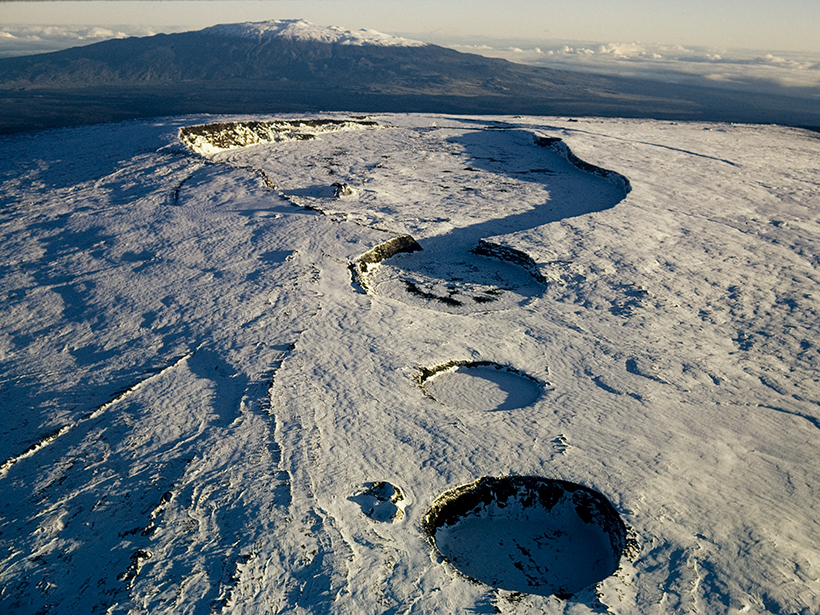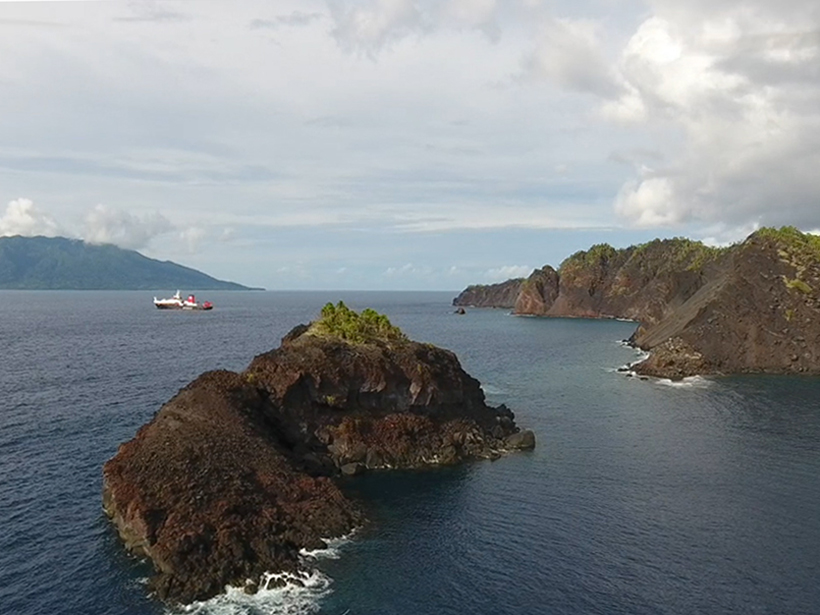Mauna Loa is stirring—is a major eruption imminent? Comparisons with previous eruptions paint a complicated picture.
volcanoes
An 1888 Volcanic Collapse Becomes a Benchmark for Tsunami Models
When volcanic mountains slide into the sea, they trigger tsunamis. How big are these waves, and how far away can they do damage? Ritter Island provides some answers.
Drone Peers into Open Volcanic Vents
An unmanned aerial vehicle provided the high-resolution data that allowed scientists to construct their first detailed map of erupting vents at Stromboli, one of the world’s most active volcanoes.
Quiet Volcanic Activity Changes Speed of Ambient Seismic Waves
Seismic data collected continuously for 4 years could improve understanding of geological structures that underlie Japan’s Izu Oshima volcanic island.
Satellite Observations Could Help Forecast an Eruption’s End
Researchers studying past volcanic activity found they could retrospectively predict when outflows of molten rock would cease for about 40% of effusive eruptions, the kind that produces flowing lava.
Caught on Camera: Volcanic Bombs in Flight
A recent paper in Reviews of Geophysics revealed new insights into the flight patterns of solid and molten debris flung out of volcanos during explosive eruptions.
A Promising New Tool for Forecasting Volcanic Hazards
A new model that simulates the behavior of surging ash clouds may help scientists to better predict the hazards associated with the deadliest type of volcanic flows.
Volcano’s Toxic Plume Returns as Stealth Hazard
During a closely watched eruption, plumes of harmful sulfur dioxide gas morphed into “plumerangs” of sulfuric-acid-rich aerosols that descended on populated parts of Iceland.
Can Water Vapor Help Forecast When a Volcano Will Blow?
A widely used technique to monitor sulfur dioxide was tweaked to focus on water vapor at Peru’s Sabancaya Volcano. Results show that the volcano steamed up prior to its 2016 eruption.
Homemade Lava Flows Fuse Science with Art on Video
An artist’s impulse to recreate natural landscapes leads to fiery scientific explorations that elucidate the behavior of erupting lava and the solid shapes it becomes.










